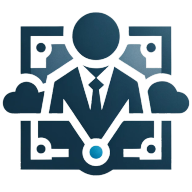What Are Critical Lessons from Strategies that Failed to Meet Expectations?
When strategies don't go as planned, some of the most critical lessons are learned. Insights from a Founder & CEO and a Senior Project Manager reveal the depth of experience needed to navigate such challenges. This article previews the expertise shared, starting with the need to adapt to market-specific challenges and concluding with the importance of strategic acquisition. With a total of eleven insights, readers will gain valuable knowledge from seasoned professionals.
- Adapt to Market-Specific Challenges
- Redirect Budget to Traditional Advertising
- Align Strategies with Customer Needs
- Engage Directly with Customers
- Plan Thoroughly for Logistics and Risks
- Synchronize Sales and Marketing Metrics
- Maintain Core Values During Scaling
- Validate Assumptions Before Scaling
- Regularly Review and Adjust Strategies
- Diversify Client Portfolio
- Focus on Strategic Acquisition
Adapt to Market-Specific Challenges
A critical lesson I learned from a strategy that didn't go as planned came during the expansion of a diagnostic-imaging company into São Paulo. We anticipated replicating the success we'd seen in smaller markets but underestimated the unique regulatory and competitive challenges in a metropolitan area like São Paulo. This oversight led to initial delays and increased costs, reminding me that market-specific adaptations are non-negotiable.
I realized the importance of in-depth market research even in seemingly routine expansions. For example, by applying more localized strategies later, we increased our competitive edge and market share by 30% within a year. This experience taught me that a uniform strategy doesn't work in varying environments, and customization based on local contexts is key.
This approach now informs my work at Profit Leap, where adapting solutions to specific client environments has helped achieve year-over-year revenue increases for our clients. Instead of a one-size-fits-all model, we prioritize tailoring strategies, whether it's automating operations with HUXLEY or crafting scalable strategic frameworks.

Redirect Budget to Traditional Advertising
We decided to launch a major campaign using podcast advertising to expand its customer base. The strategy involved sponsoring dozens of popular podcasts across various genres, aiming to reach a wide and engaged audience. However, the campaign didn't deliver the expected results. We felt we had great ads on the correct podcasts, but didn't see any results from all our efforts. We scaled back its podcast efforts and redirected our budget back to more traditional advertising. We learned this isn't the marketing platform for our products.

Align Strategies with Customer Needs
In the early days of Rocket Alumni Solutions, I quickly learned the importance of understanding customer needs through a strategy that initially stumbled. I believed my SEO strategy, which involved creating multiple fast-loading landing pages for various educational keywords, would drive significant traffic. While technically successful in terms of visibility, it failed to convert because it didn't align with what school administrators were truly seeking. This highlighted the necessity of coupling technical SEO with a deep understanding of the client's pain points.
We had to pivot. Instead of solely pushing our platform's features, I organized workshops where we invited school administrators to discuss challenges in alumni engagement. This 'reverse selling' approach not only aligned our solutions more closely with client needs but also led to a 30% increase in lead-conversion rates. The critical lesson: technology should support a genuine dialogue with clients rather than replace it. By honing in on user experience and real-world feedback, we transformed a technical setback into a collaborative success.
In my experience launching Rocket Alumni Solutions, a critical lesson came when I overestimated the effectiveness of initial marketing channels. Early on, I relied heavily on traditional sales pitches to secure school partnerships, but interest was lukewarm. Realizing this, we pivoted to a 'reverse selling' approach by hosting workshops for school administrators to identify their challenges in alumni engagement. This strategic shift increased our lead-conversion rates by 30% and established durable relationships with many institutions.
Another valuable lesson was the importance of SEO experimentation. I built multiple landing pages with different domain names to test search terms, achieving a first-page rank for each. This diverse SEO approach led to a significant rise in inbound leads, which was pivotal for our early growth. From this, I learned the necessity of employing a diverse set of strategies and being willing to test and iterate continuously.

Engage Directly with Customers
One thing I kept in mind from a tactic that didn't go as intended at Groomsday was the need to really connect with the viewpoint of the customer. When we unveiled a range of premium products, we expected their style and quality would attract consumers, but our sales fell short of our forecasts without fully accounting for their sensitivity to price. This encounter made me realize how easily one can become enthusiastic about the possibilities of a product while neglecting the pragmatic aspect: how much consumers are really ready to pay for it.
Following that encounter, I began actively seeking comments straight from consumers by means of focus groups and customer surveys, allowing unrestricted expression of ideas. We truly listened to their spending comfort levels and needs rather than basing selections on what we felt was competitive or just beautiful. In more thorough analysis of our past sales data, I also found trends we hadn't previously addressed—such as consumer response to bundled-pricing offers. This change enabled us to produce goods that fit consumer preferences, therefore producing far better outcomes. I now treat every product introduction as a dialogue with our consumers, ensuring that our choices follow their tastes.

Plan Thoroughly for Logistics and Risks
In my journey from construction management to writing and technology, I've seen how projects can deviate from initial plans. One critical lesson came from my time as a construction manager when I led a project that aimed to incorporate sustainable materials. We were optimistic about both environmental benefits and cost savings. However, we underestimated the supply chain complexities of sourcing these materials, resulting in delays and increased costs. This taught me the importance of thorough logistics planning and risk assessment before committing to new strategies.
Similarly, while working as a network engineer, I helped implement a major infrastructure upgrade. We anticipated improved performance but didn't factor in the extensive downtime required for integration. This highlighted the necessity of having backup solutions and transparent communication with stakeholders to manage expectations. Timelines need to be flexible, and stakeholders must be kept updated to maintain trust and minimize disruption.
These experiences underline the need for adaptability and contingency plans in strategic execution. Always prepare for potential setbacks by involving experienced team members who can foresee challenges and pivot strategies without compromising project goals. One critical lesson I learned involved underestimating the communication challenges in a large-scale construction project. As a construction manager, I once led a project where assumptions about the clarity and effectiveness of communication with subcontractors led to a cascade of costly delays and misunderstandings. Missing details in communication regarding task execution and timelines caused the project to overshoot its deadlines and budget projections drastically.
An illustrative example was during a critical phase involving HVAC installation. A minor miscommunication about the delivery timeline of essential components snowballed into weeks of delay, impacting later stages. This experience taught me the necessity of implementing rigorous communication protocols and checkpoints to ensure alignment among all parties involved.
Incorporating regular, structured communication and feedback sessions became a priority, not just in construction but also in my writing endeavors. This strategy ensured all stakeholders had a clear, actionable understanding, allowing for agile adjustments. Ensuring that everyone is consistently on the same page is essential, regardless of the industry.

Synchronize Sales and Marketing Metrics
In one challenging project, I learned the importance of aligning sales and marketing processes from a strategy that initially struggled. We had implemented a CRM upgrade, but the sales and marketing teams were using conflicting data metrics, leading to inconsistencies and missed opportunities. By digging into the problem, I harnessed customer feedback and data analytics to synchronize these metrics, ultimately increasing data accuracy by 24.4%.
I also encountered a situation where AI implementation fell short due to unrealistic initial expectations. We aimed to streamline operations with predictive analytics, but early models failed to deliver the anticipated impact on sales cycles. By iterating through user feedback and refining our data inputs, I eventually reduced sales cycles by 17%, highlighting the necessity of starting with achievable goals and continuously adapting AI interventions.
These experiences reinforced the importance of flexibility and customer-focused problem-solving in strategy execution. Prioritizing alignment, realistic expectations, and iterative improvement has consistently turned initial setbacks into opportunities for measured success.

Maintain Core Values During Scaling
When I ran Redfox Visual, a strategy that went off-track was trying to scale too quickly while maintaining our "marketing sucks" philosophy. As we grew, I found myself tied up in CEO duties and less involved with advertising, which corrupted our unique approach and led to generic outputs, alienating clients. We learned that maintaining core values while scaling requires deliberate action, not assumptions that you'll handle it on the go.
A specific instance was with a big, long-term client who expected innovative work but started receiving generic templates, which they noticed and rightfully criticized. It taught me that creative innovation doesn't lie solely in personal drive but in the team's shared understanding and your leadership's adjustment as roles evolve. Hence, it's crucial to keep reinforcing your core philosophy and stay hands-on in quality control, or it slips through the cracks unnoticed.
After that, reorganizing and refocusing on client engagement with a smaller, agile team across the globe helped us get back on track. Now, with The Rohg Agency, I ensure that even remote teams are strongly aligned with our unique values and that efforts are specifically custom each time—ensuring we continue to make the standout sh*t we're known for.

Validate Assumptions Before Scaling
A critical lesson I learned from a strategy that didn't go as planned is the importance of testing assumptions before scaling. Early on at Tools420, we launched a major ad campaign, assuming that deep discounts alone would drive conversions. However, the campaign underperformed because we hadn't fully considered our audience's decision-making process, particularly their need for education on product features and benefits.
This experience taught me that even great offers need to be paired with clear, value-driven messaging. Moving forward, we incorporated A/B testing and smaller pilot campaigns before fully committing resources. By analyzing data from these tests, we fine-tuned our messaging to address customer concerns and highlight unique selling points, ensuring that future strategies were more aligned with our audience's needs. For corporate professionals, the takeaway is to validate your assumptions with real-world feedback before scaling up any initiative.

Regularly Review and Adjust Strategies
I’ve learned that even the most meticulously crafted strategies can hit unexpected snags. One of the most critical lessons I’ve faced was from a financial forecasting strategy that ultimately fell short. I realized the importance of flexibility and adaptability in our plans. Instead of rigidly sticking to our original projections, I recommend regularly reviewing and adjusting strategies based on real-time data and feedback. This approach not only mitigates risks but also opens the door for innovative solutions we might not have considered initially.

Diversify Client Portfolio
As the CEO of Audo, an AI-driven career development platform, I've learned that strategies don't always unfold as envisioned. When we launched our enterprise product, we expected strong initial uptake from large companies. However, their complex procurement processes slowed adoption. To overcome this, we pivoted to focus on mid-size firms and non-profits. This shift resulted in several new partnerships, increasing our client base by over 30% last quarter.
A key lesson was avoiding over-reliance on any one customer segment. By diversifying our client portfolio, we gained stability and reduced risk. We now onboard enterprise clients gradually while also targeting smaller organizations. This balanced approach fuels sustainable growth.
Additionally, new features can be a double-edged sword. We recently added a skill-mapping tool but failed to fully consider implementation challenges. The expanded scope disrupted development timelines, delaying other critical projects. Going forward, we're improving scoping procedures and phasing the release of complex features. This helps manage expectations, ensure high quality, and prevent over-promising.
The takeaway is that strategic missteps are inevitable but surmountable. With an adaptive mindset, diversified approach, and disciplined processes, businesses can pivot as needed to achieve their goals. Success comes from learning and evolving.

Focus on Strategic Acquisition
Navigating domain investing has taught me invaluable lessons about strategic missteps. In 2021, I chased the NFT trend, excited by its potential, and secured hundreds of domains with "NFT" in them. They seemed promising but, in hindsight, lacked the staying power. None sold, and I eventually let most lapse. This experience underscored the importance of sticking to what you know and not overcommitting to trends without a solid strategy.
I also learned the hard way about the importance of understanding your buyer. During a significant transaction involving the domain ShieldPro.com, I failed to research the buyer properly. Had I known about their $100 million annual revenue, I could have negotiated a much higher sale price. This taught me the necessity of due diligence in every aspect of negotiation.
These lessons emphasized that domain investing isn't just about acquiring assets but about knowing markets and engaging buyers effectively. My approach transformed since then, focusing on strategic acquisition and thorough buyer understanding to maximize returns.


